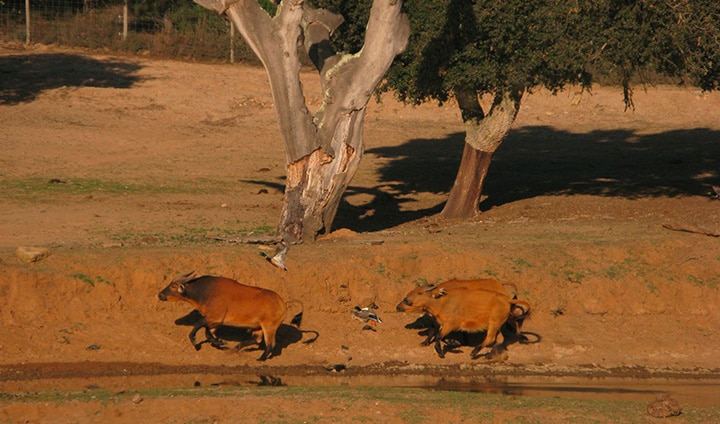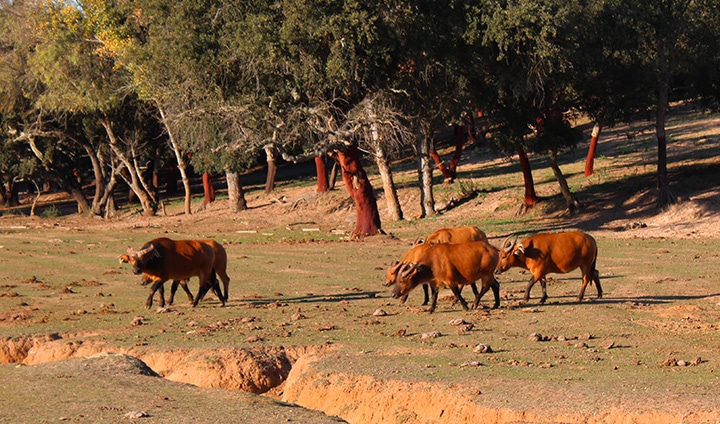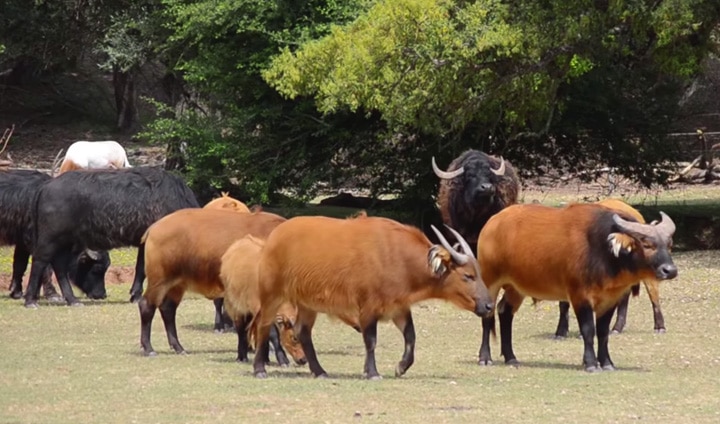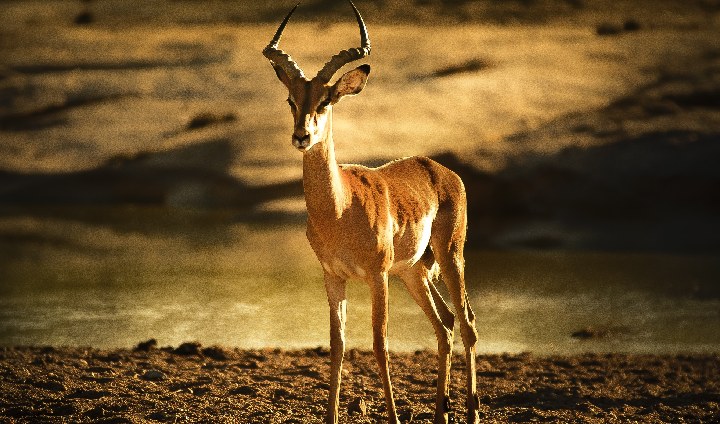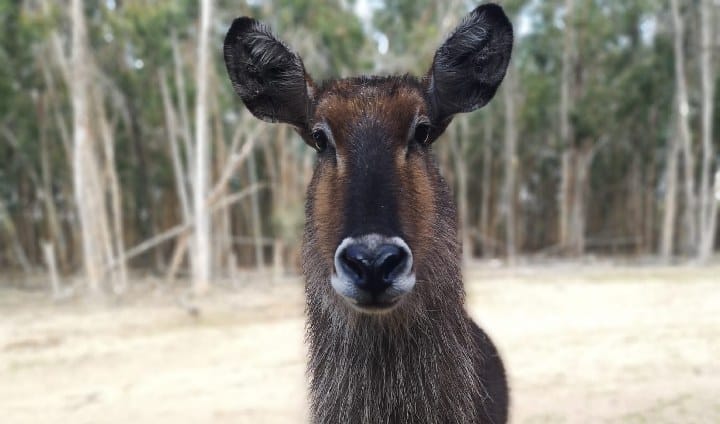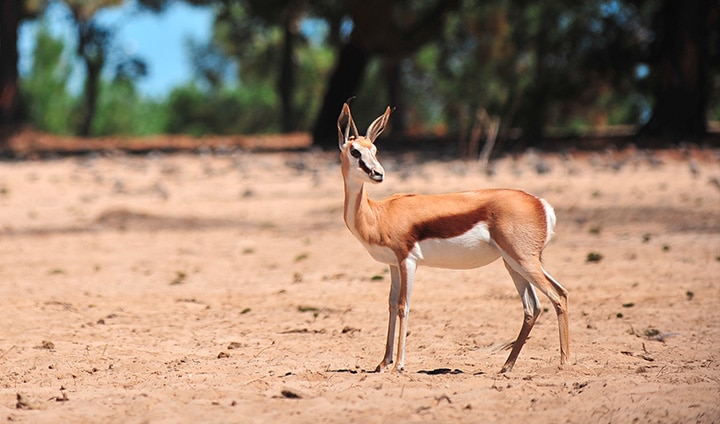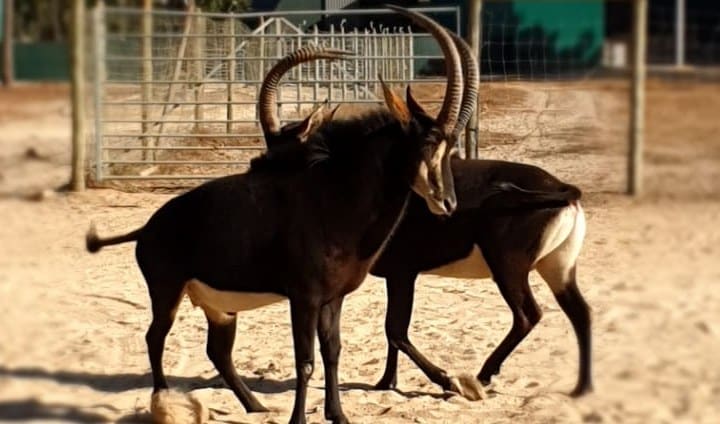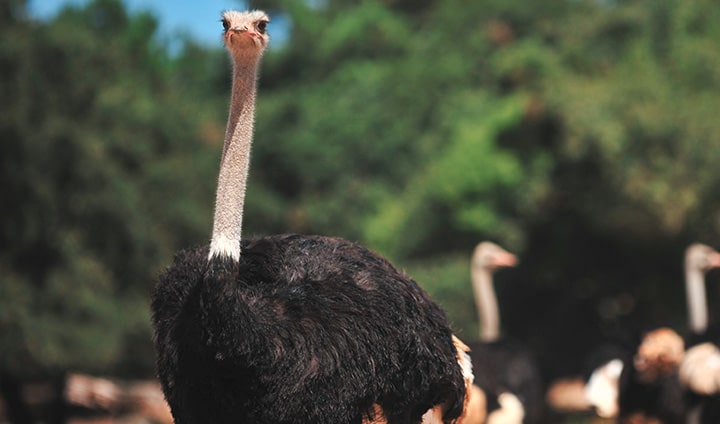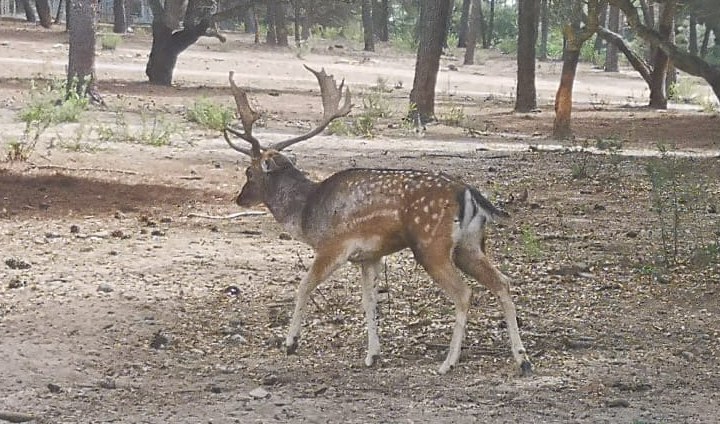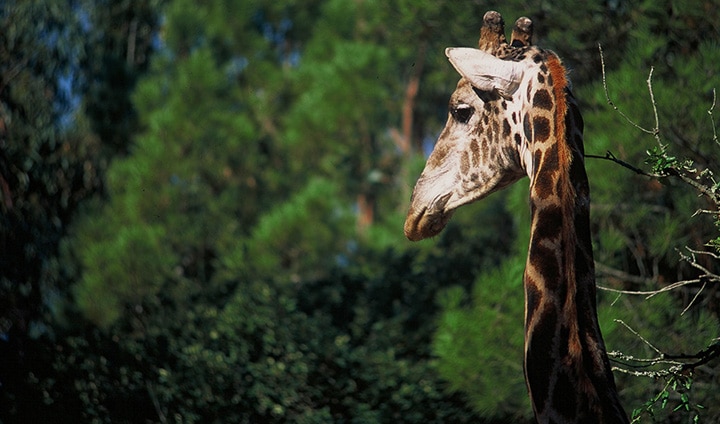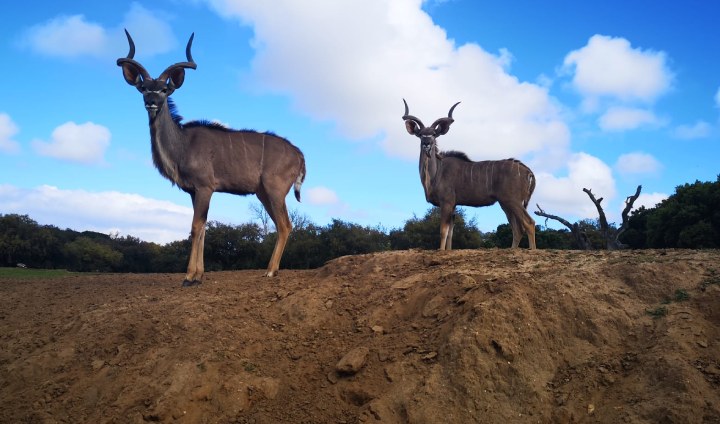Distribution and Habitat: The geographical distribution of this species is centered in central Africa. They prefer savanna areas with forest patches and have been found at more than 4000 m above sea level.
Diet: Buffaloes are ruminants feeding on pastures, roots and leaves. The diet is determined by availability, when available plants with a higher degree of protein and carbohydrates are chosen. They can ingest up to 17 kg of food a day.
Reproduction: They are typically polygamous animals. Females do not have offspring every year as the gestation period is 10 to 12 months. Usually only one child is born, but twin births have been documented. Buffalo calves are weaned at six months of age.
Behaviour: Buffaloes are diurnal and nocturnal animals. They use their coloring to camouflage themselves in the lush vegetation of the forests. They are animals that are in constant movement and therefore do not have a defined territory although herds are led by a dominant male. The herds are made up of a maximum of 10 individuals.
Conservation Status: Data Deficient (DD)
Classe: Mammalia
Order: Artiodactyla
Family: Bovidae
Dimensions: 1.8 m – 2.2 m length
Weight: 300 kg – 750 kg
Lifespan: 30 years in captivity and 25 years in the wild


